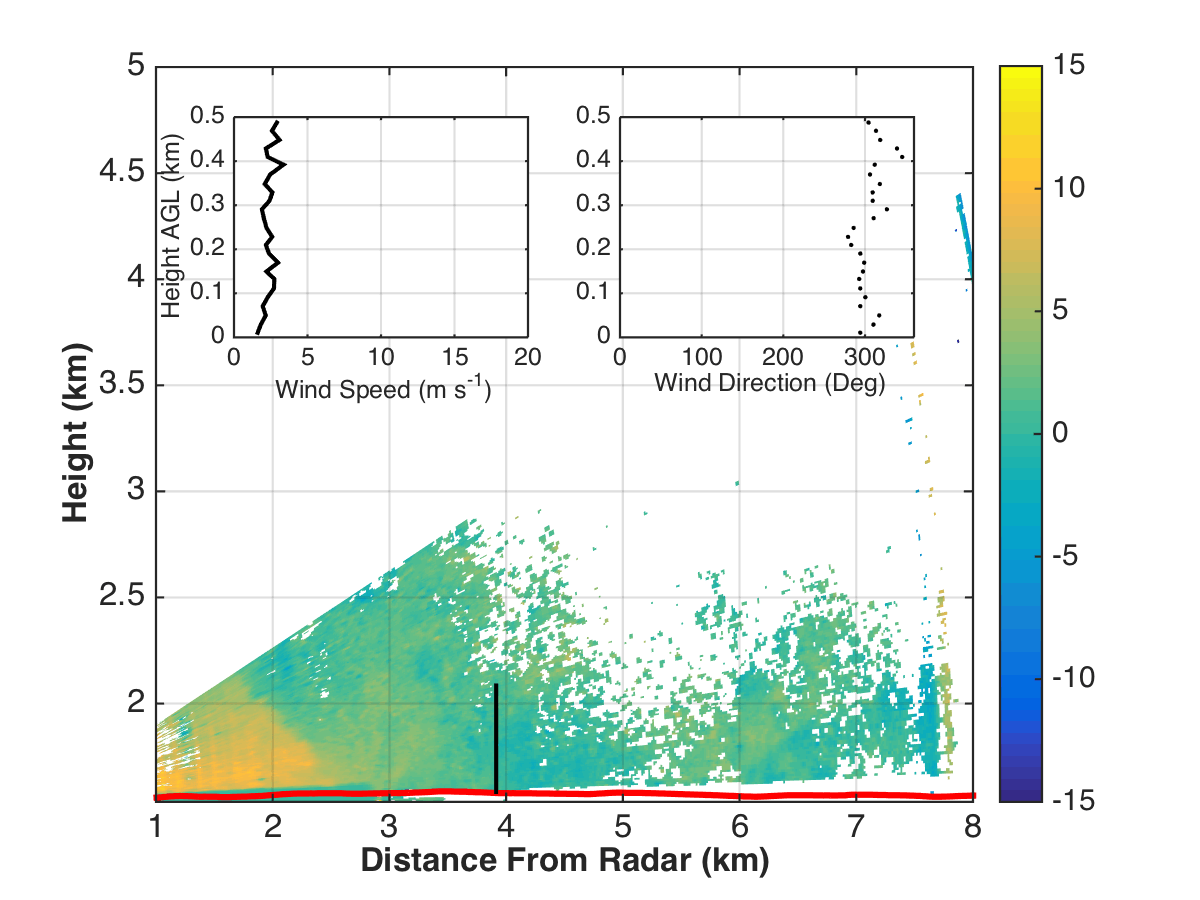However, we were fairly active yesterday. First, we believe we have the generator issue with Ka1 resolved (for real this time...). The culprit seems to have been a clogged fuel line. While one team was tending to the generator, TTUKa2 was able to coordinated stares (5 min in duration) with HRDL in clear air. Though the returns were marginal from the Ka perspective, several of the 5 minute periods will likely provide good comparisons. We terminated coordination with HRDL just before 0 Z 19 March due to deteriorating data quality. We redeployed at approximately 04Z 19 March to collect virtual towers in the light precipitation. 36 minutes of virtual towers were collected before the small area of precipitation moved out of the area and degraded data quality. Given the precipitation, this iteration of coordinated RHIs placed the virtual tower directly over the lidar supersite (instead of the 102 m SE offset). Hopefully the precip was light enough to enable some lidar profile data collection for comparison. We also attempted to perform dual-Doppler sectors to compliment the dual-Doppler lidar stares that were ongoing. However, second trip echoes brought a quick end to the deployment about 10 min into the dual-Doppler sector scanning.
The combined efforts of yesterday and today being the total number of minutes scanned to 3625 of the available 7200. We will look for more opportunities to coordinate with other platforms in the future.
Preliminary analysis of previously collected datasets is ongoing (albeit slowly). The 16 March 2015 is proving to be very interesting. Several different clear air environments were sampled thanks to the passage of several boundaries. One such boundary that transversed the area around 17:55 Z resembled a density current from the perspective of TTUKa2. The dual-Doppler wind profiles behind this boundary occasionally demonstrate a low-level jet type structure after the passage of the leading edge of the boundary:
The RHI of Ka2 was mostly aligned with the wind behind the boundary. TTUKa1, with an RHI azimuth of 117.7, sampled the component parallel to the boundary. While this was generally unexciting, there did appear to be a vertical circulation (misocyclone?) along the frontal boundary. This appears in the RHI as a column of outbound radial velocities gradually replaced by a column of inbound radial velocities near the surface at approximately 2. 9 km range. This is purely speculative at this point, but the signature is interesting nonetheless.


No comments:
Post a Comment